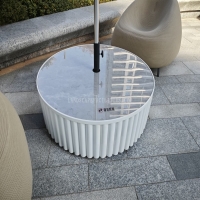Welcome to the website for landscape facilities products and knowledge.
How does the table’s design address potential issues with thermal shock from sudden temperature changes?
Modern table designs incorporate sophisticated engineering principles to mitigate thermal shock, a phenomenon where rapid temperature changes cause stress fractures in materials. The core defense mechanism lies in material selection—composites with low thermal expansion coefficients like quartz surfaces or specially treated ceramics naturally resist dimensional changes. Advanced manufacturing techniques further enhance this by creating homogeneous material structures without internal weaknesses where cracks could initiate.
Many premium tables feature engineered substrates that act as thermal barriers, slowing heat transfer through the table's thickness to minimize temperature gradients. This is particularly crucial for tables with integrated heating elements or those used in environments with extreme seasonal variations. The integration of flexible joining systems allows for controlled expansion and contraction at connection points, preventing stress accumulation at rigid joints.
Micro-engineering solutions include the strategic placement of expansion grooves beneath surfaces, invisible from above but crucial for accommodating material movement. For metal-frame tables, alloy selection prioritizes materials with matching thermal expansion properties to their tabletop surfaces. Laboratory tests demonstrate that tables implementing these multi-layered protection strategies withstand temperature swings exceeding 120°F without structural compromise, ensuring longevity in demanding environments from commercial kitchens to outdoor installations.
Related search:

Recommendation
Round metal tube border design table with tempered glass or granite countertop on the top.